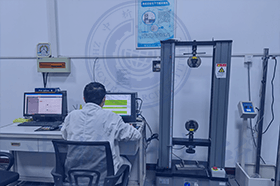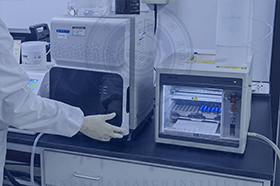檢測信息(部分)
問:包裝膜檢測的產品信息包括哪些內容?
答:包裝膜檢測涵蓋材質成分、物理性能、化學安全性、阻隔性能等,適用于食品、醫藥、工業產品等領域的包裝材料質量控制。
問:包裝膜的用途范圍有哪些?
答:包裝膜廣泛應用于食品保鮮、藥品防潮、電子產品防護、日用品密封等領域,需滿足不同場景下的強度、耐候性及安全標準。
問:檢測概要包含哪些核心步驟?
答:檢測流程包括樣品采集、實驗室分析、數據驗證及報告出具,依據國際標準(如ISO、ASTM)或客戶定制要求執行。
檢測項目(部分)
- 拉伸強度:衡量材料在拉力作用下的抗斷裂能力。
- 透光率:評估薄膜對光線的透過性能,影響產品展示效果。
- 熱封強度:檢測封口處的粘合牢固度,確保密封可靠性。
- 氧氣透過率:反映材料阻隔氧氣的能力,關鍵于食品保鮮。
- 水蒸氣透過率:測定防潮性能,適用于高濕度環境需求。
- 厚度均勻性:保證膜材結構一致性,避免機械加工缺陷。
- 摩擦系數:評估薄膜表面滑爽度,影響包裝機運行效率。
- 耐穿刺性:測試抗尖銳物穿透能力,保護內容物完整性。
- 重金屬含量:檢測鉛、鎘等有害物質,符合環保法規。
- 溶劑殘留:分析印刷或復合工藝中化學溶劑的殘留風險。
- 抗靜電性能:防止靜電吸附灰塵,用于電子類產品包裝。
- 耐高低溫性:驗證材料在極端溫度下的穩定性。
- 遷移量測試:確保添加劑不會轉移至包裝內容物。
- 印刷附著力:檢驗油墨與基材的結合強度。
- 撕裂強度:模擬實際使用中意外撕裂的阻力。
- 透濕量:量化濕度交換速率,用于干燥敏感品包裝。
- 抗老化性:通過加速老化實驗預測使用壽命。
- 霧度:衡量薄膜透明度的光學指標。
- 菌落總數:針對食品級包裝的微生物污染控制。
- 阻燃性能:適用于防火要求較高的工業包裝場景。
檢測范圍(部分)
- 聚乙烯(PE)包裝膜
- 聚丙烯(PP)包裝膜
- 聚氯乙烯(PVC)包裝膜
- 聚酯(PET)包裝膜
- 尼龍(PA)包裝膜
- 鋁塑復合膜
- 鍍氧化硅膜
- 收縮膜
- 拉伸纏繞膜
- 真空鍍鋁膜
- 高阻隔共擠膜
- 生物降解膜
- 透氣膜
- 抗紫外線膜
- 抗菌功能膜
- 導電膜
- 農用大棚膜
- 醫藥泡罩包裝膜
- 食品級復合膜
- 鋰電池封裝膜
檢測儀器(部分)
- 氣相色譜質譜聯用儀(GC-MS)
- 電子拉力試驗機
- 透氧透濕測試儀
- 摩擦系數測定儀
- 分光光度計
- 熱封強度測試儀
- 原子吸收光譜儀(AAS)
- 氙燈老化試驗箱
- 熔融指數儀
- 紅外光譜儀(FTIR)
檢測標準(部分)
本文件適用于專用盛裝使用后的可重復使用醫用織物(包括感染性織物、臟污織物)的水溶性包裝膜袋。
本文件不適用于非醫用包裝的塑料膜袋。
本標準適用于以聚乙烯樹脂為主要原料,通過擠出流延、印刷工藝成型的生活用干紙巾流延聚乙烯(CPE)薄膜。
本標準適用于以聚乙烯為主要原料通過共擠吹塑工藝制成的液態奶包裝膜或袋。
本標準適用于使用溫度在80℃以下的以不同塑料材料用干法復合、無溶劑復合、擠出復合或濕式復合工藝制成的供食品包裝用的復合膜、袋產品。
This test method is designed for use by a trained sensory panel experienced in using an intensity scale or rank ordering and familiar with the descriptive terminology and references associated with the packaging materials. Data analysis and interpretation should be conducted by a trained and experienced sensory professional. See Refs (4-5) for discussions on panelist screening and training.
This test method should be considered as a screening technique for suppliers and end-users to use in assessing flavor impact of packaging films. The application of this test method will result in a FPS or rank data. The determination for suitability of a packaging film for a particular end-use should be based on a set of predetermined criteria including the FPS or rank score. Information obtained from the transfer tests can also be used to evaluate the origin of any transferred tastes or odors.
1.1 This test method covers a recommended procedure for examining odor and taste properties of polymeric film intended for use as flexible packaging materials. This test method can be used for single (mono) layers coextruded and laminate materials. The focus of this test method is the evaluation of the film in terms of its perceived inherent odor and the transfer of package-related odors or flavors or both to water and other model systems (bland food simulants).
1.2 This test method assumes testing of the films at a one-time point; shelf-life testing is not included. Please see Ref (
1.3 This test method can provide sample preparation procedures and two methods of evaluation. The Film Performance Score Method allows for the comparison of any film sample to another. The Ranking Method allows for comparison of samples within a set. The preparation of samples is consistent regardless of the method of evaluation used.
1.4 This standard does not purport to address all of the safety concerns if any associated with its use. It is the responsibility of the user of this standard to establish appropriate safety and health precision and determine the applicability of regulatory limitations prior to use
1.1 This test method covers a recommended procedure for examining odor and taste properties of polymeric film intended for use as flexible packaging materials. This test method can be used for single (mono) layers coextruded and laminate materials. The focus of this test method is the evaluation of the film in terms of its perceived inherent odor and the transfer of package-related odors or flavors or both to water and other model systems (bland food simulants).
1.2 This test method assumes testing of the films at a one-time point; shelf-life testing is not included. Please see Ref (1)2 for discussion of shelf-life testing.
1.3 This test method can provide sample preparation procedures and two methods of evaluation. The Film Performance Score Method allows for the comparison of any film sample to another. The Ranking Method allows for comparison of samples within a set. The preparation of samples is consistent regardless of the method of evaluation used.
1.4 This standard does not purport to address all of the safety concerns if any associated with its use. It is the responsibility of the user of this standard to establish appropriate safety health and environmental practices and determine the applicability of regulatory limitations prior to use.
1.5 This international sta
This guide is for user evaluation selection specification and application of stretch wrap materials. It may be used between the buyer and seller to arrive at purchase specifications. Specific methods are contained within the body of the guide for material evaluation user performance and quality assurance testing.
Care must be exercised in extrapolating test values obtained by use of the test methods outlined in this guide to actual field performance.
1.1 This guide covers recommended guidelines and test methods for the selection specification and use of stretch wrap films for unitizing reinforcing and palletizing for indoor environments. This can include storage or transport or both in warehouses closed containers such as truck trailers or rail boxcars and associated transfer terminals. This guide does not cover the performance issues associated with outdoor exposure.
1.2 The values stated in inch-pound units are to be regarded as standard. The values given in parentheses are mathematical conversions to SI units that are provided for information only and are not considered standard.
1.3 This standard does not purport to address all of the safety concerns if any associated with its use. It is the responsibility of the user of this standard to establish appropriate safety and health practices and determine the applicability of regulatory limitations prior to use.
A1.1.1 This test method is intended to be used as a means of comparing the wrapping performance of stretch wrap films.
本標準適用于以全生物降解樹脂為主要原料生產的用于物流快遞運輸包裝、投遞包裝的薄膜、袋。
本文件適用于塑料與鋁箔和紙復合而成供食品包裝用的厚度小于0.3mm的膜、袋。
本文件不適用于液體食品包裝膜、袋及需要滅菌使用的膜、袋。
本標準適用于BOPP薄膜(普通包裝膜、熱封包裝膜、消光包裝膜、電容膜)生產企業單位產品能耗的計算、考核以及對新建或改擴建項目的能耗控制與評價。
本標準不適用于雙向拉伸聚丙烯鋰離子電池隔膜。
本部分適用于卷煙。
本文件適用于中空纖維簾式膜組件(以下簡稱為膜組件)的生產、科研、使用和管理。

檢測資質(部分)










檢測優勢
檢測實驗室(部分)





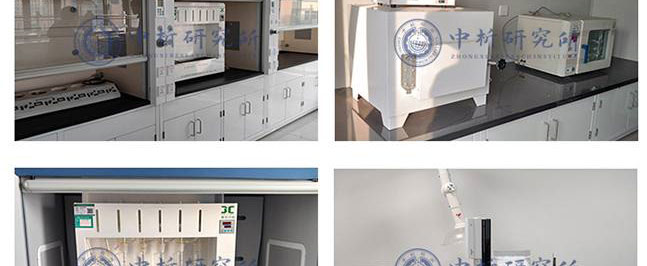
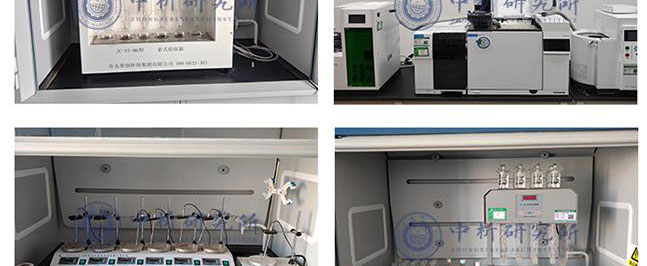
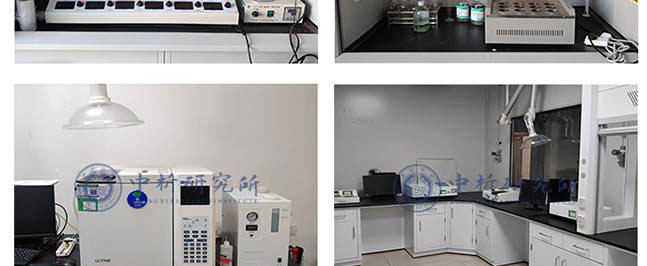
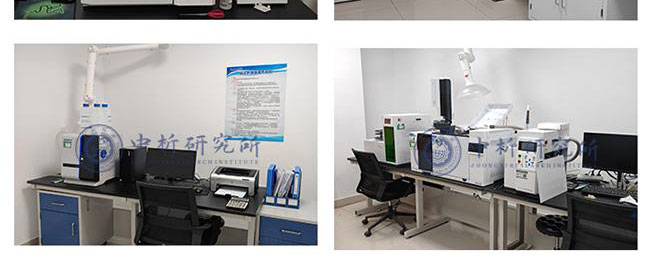
合作客戶(部分)





檢測報告作用
1、可以幫助生產商識別產品的潛在問題或缺陷,并及時改進生產工藝,保障產品的品質和安全性。
2、可以為生產商提供科學的數據,證明其產品符合國際、國家和地區相關標準和規定,從而增強產品的市場競爭力。
3、可以評估產品的質量和安全性,確保產品能夠達到預期效果,同時減少潛在的健康和安全風險。
4、可以幫助生產商構建品牌形象,提高品牌信譽度,并促進產品的銷售和市場推廣。
5、可以確定性能和特性以及元素,例如力學性能、化學性質、物理性能、熱學性能等,從而為產品設計、制造和使用提供參考。
6、可以評估產品是否含有有毒有害成分,以及是否符合環保要求,從而保障產品的安全性。
檢測流程
1、中析研究所接受客戶委托,為客戶提供檢測服務
2、客戶可選擇寄送樣品或由我們的工程師進行采樣,以確保樣品的準確性和可靠性。
3、我們的工程師會對樣品進行初步評估,并提供報價,以便客戶了解檢測成本。
4、雙方將就檢測項目進行詳細溝通,并簽署保密協議,以保證客戶信息的保密性。在此基礎上,我們將進行測試試驗.
5、在檢測過程中,我們將與客戶進行密切溝通,以便隨時調整測試方案,確保測試進度。
6、試驗測試通常在7-15個工作日內完成,具體時間根據樣品的類型和數量而定。
7、出具檢測樣品報告,以便客戶了解測試結果和檢測數據,為客戶提供有力的支持和幫助。
以上為包裝膜檢測的檢測內容,如需更多內容以及服務請聯系在線工程師。






